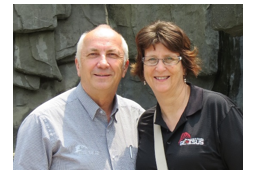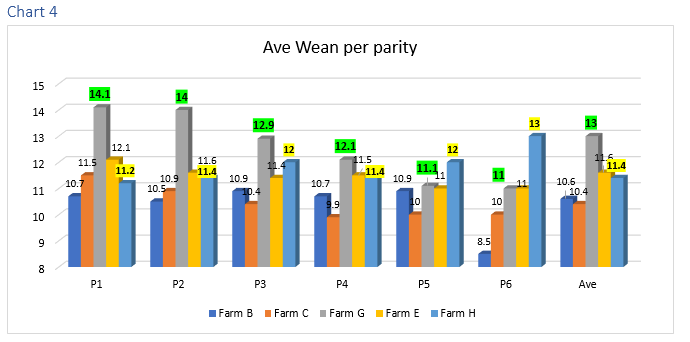
Do these pants make me look fat?
Obviously, there is never a right answer.
What is the proper backfat for a sow? This is one of my most frequent asked questions. Fifteen years ago, I had the opportunity to work on a 3-year project studying this question. I have always been reluctant to answer this question because in general, a sow can perform normally with a large range of backfat, as this project had found out. In differing levels of backfat, she will require differing levels of management. Fifteen years later, the sow is now weaning what we had at that time as total born. This has made the question of backfat in sows more acute today. You can never be right in answering this question but you can see certain levels that are more manageable.
Generally, sows perform poorly when backfat is taken to extremes. Sows that are too lean have fertility problems related to metabolizing muscle instead of fat during the last 3 weeks of gestation when fetus growth is the greatest and during lactation, where the demand for protein (milk) is very great. Overly fat sows tend not to eat during lactation and milk off their backs (fat reserves). This resulted in excess weight loss, poor subsequent litter size and long wean to service interval. Sows that gain and lose excess of weight during the sow interval will also have a shorter life span in the herd. Too skinny sows may just not breed back.
So, what is the right level of backfat? The right level of backfat is where the sow performs normally without excess loss of weight during lactation, weans a good litter, breeds back well and stays in the herd for a long time, with the minimum amount of management.
Backfat is more important in the first 2 parities than it is in older sows that have a greater feed intake and larger body mass to draw from. Therefore, I will focus on the gilt and its development as a best practice.
Maternal gilts should follow a strict genetic program. The emphasis on Backfat in maternal gilts should be minimal. Maternal gilts at 100 Kgs should be around 12mm to 14mm. Maternal gilts at breeding should be 14mm to 16mm. Maternal gilts at farrowing should be 20mm to 24 mm. Anything outside this is acceptable but will require greater management. I would tend to be fatter with maternal gilts than leaner. Backfat has a 40% hereditability and therefore should be focused on the Terminal sire rather than on the Maternal side. Backfat in maternal gilts is interdependent of backfat, age and weight. Charts 1, 2 and 3 look at these three important interdependent factors.
Here is a chart that gives an idea of where the backfat (in Millimeters) in maternal gilts should range at farrowing. (At breeding shift the chart 4mm to the left. Ideal at breeding from 16mm to 20mm).
The second part of this is total body mass. Maternal gilts weight is also an important part of this. Weight in Kilograms at breeding.
The third component is age. Age in days from birth at breeding.
Here is a look at 5 purebred farms I follow in China. We want to focus on Farm G. Where they are weaning 13 pigs per sow over the last 10 weeks, (12.5 for all 2016), (with all three breeds Yorkshire, Landrace and Duroc). It in contrast to the other farms places a great deal of effort in Gilt develop and gilt udder development. They focus on getting all three components in developing the gilt. The gilt is given 14 pigs to milk. Because she has adequate backfat, age and weight she is able to milk for the full term 14 pigs. Management of this gilt is the simplest. The pre-wean mortality is less than 5%. Farm H and Farm G have differing strategies. Where Farm H puts more pigs on older sows and places less emphasis on gilt development. Remember your parity distribution. The largest group is always your parity 1 sows. Farm G emphasis gilt udder development. This has a great affect in subsequent parities and longevity in the herd.
Summary
Backfat is very subjective. There is a range of acceptable levels. Some levels are more manageable than others. Backfat in maternal gilts is interdependent of age and weight. Maternal gilts require a greater need for backfat management. Managing Backfat, age and weight of the maternal gilt will help to maximize her ability to milk, and have longevity in the herd. After parity 3 the range is much broader. Look at farms with best results and adapt the best practices to your farm.
Categorised in: Featured News, Global Tech
This post was written by Genesus







